35 products
-
Japanese Coarse Pottery Chayote Tea Set
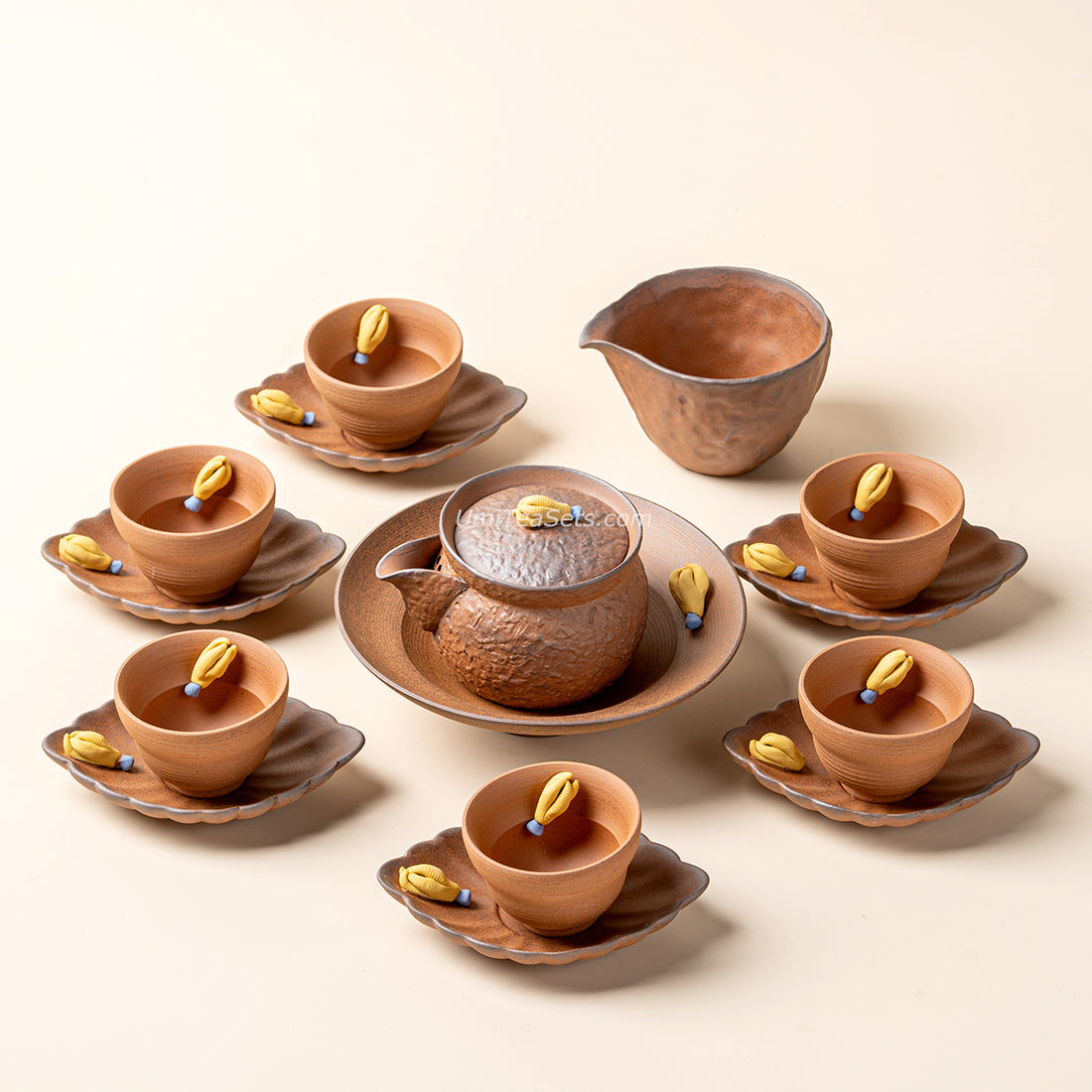 Vendor:Japanese Coarse Pottery Chayote Tea SetUmi Tea Sets
Vendor:Japanese Coarse Pottery Chayote Tea SetUmi Tea Sets- Regular price
-
$149.98 USD - Regular price
-
- Sale price
-
$149.98 USD
Quick view
-
Japanese Coarse Pottery Kobiki Tea Set
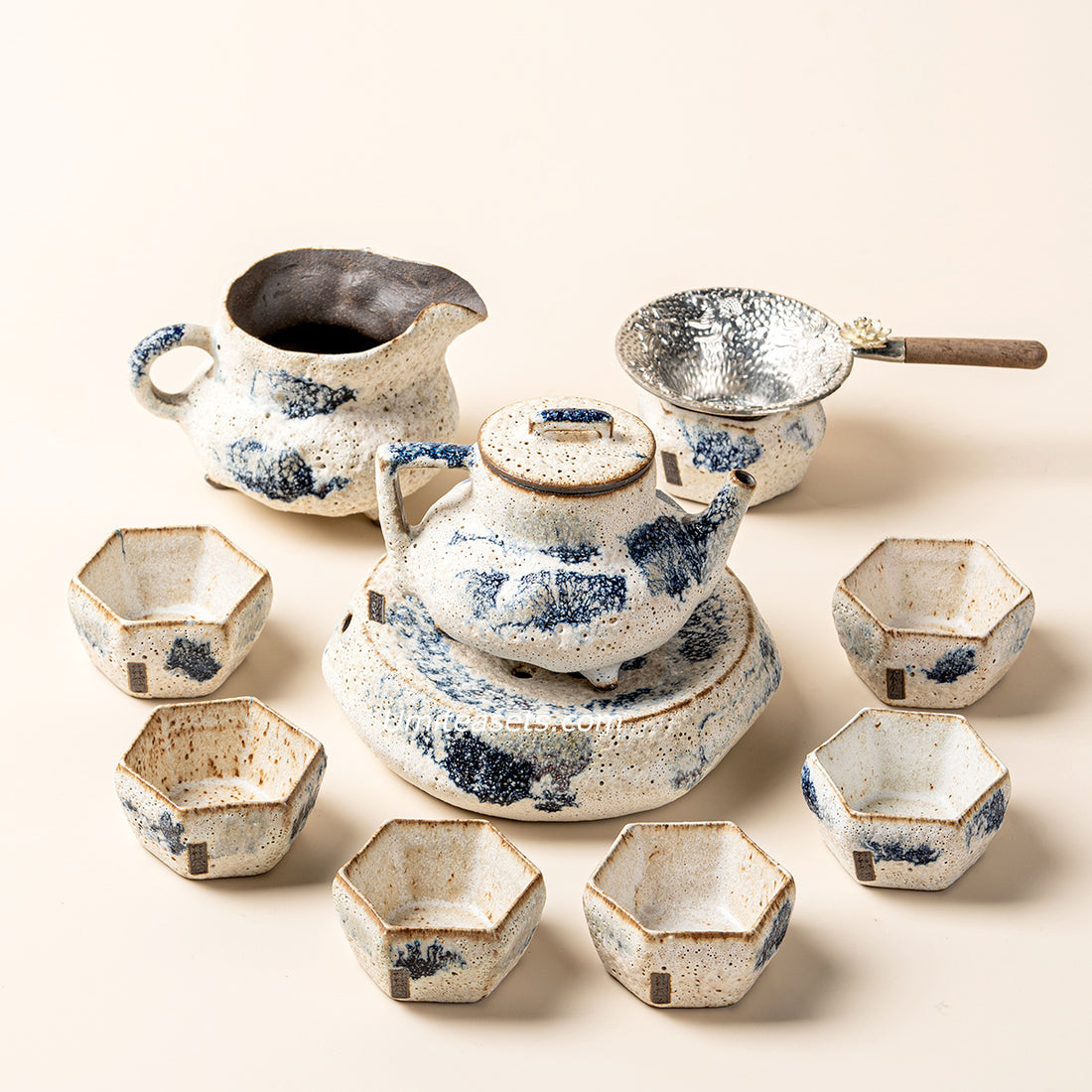 Vendor:Japanese Coarse Pottery Kobiki Tea SetUmi Tea Sets
Vendor:Japanese Coarse Pottery Kobiki Tea SetUmi Tea Sets- Regular price
-
$216.98 USD - Regular price
-
- Sale price
-
$216.98 USD
Quick view
-
Japanese Pottery Gilded Iron Glaze Plum Blossoms Tea Set
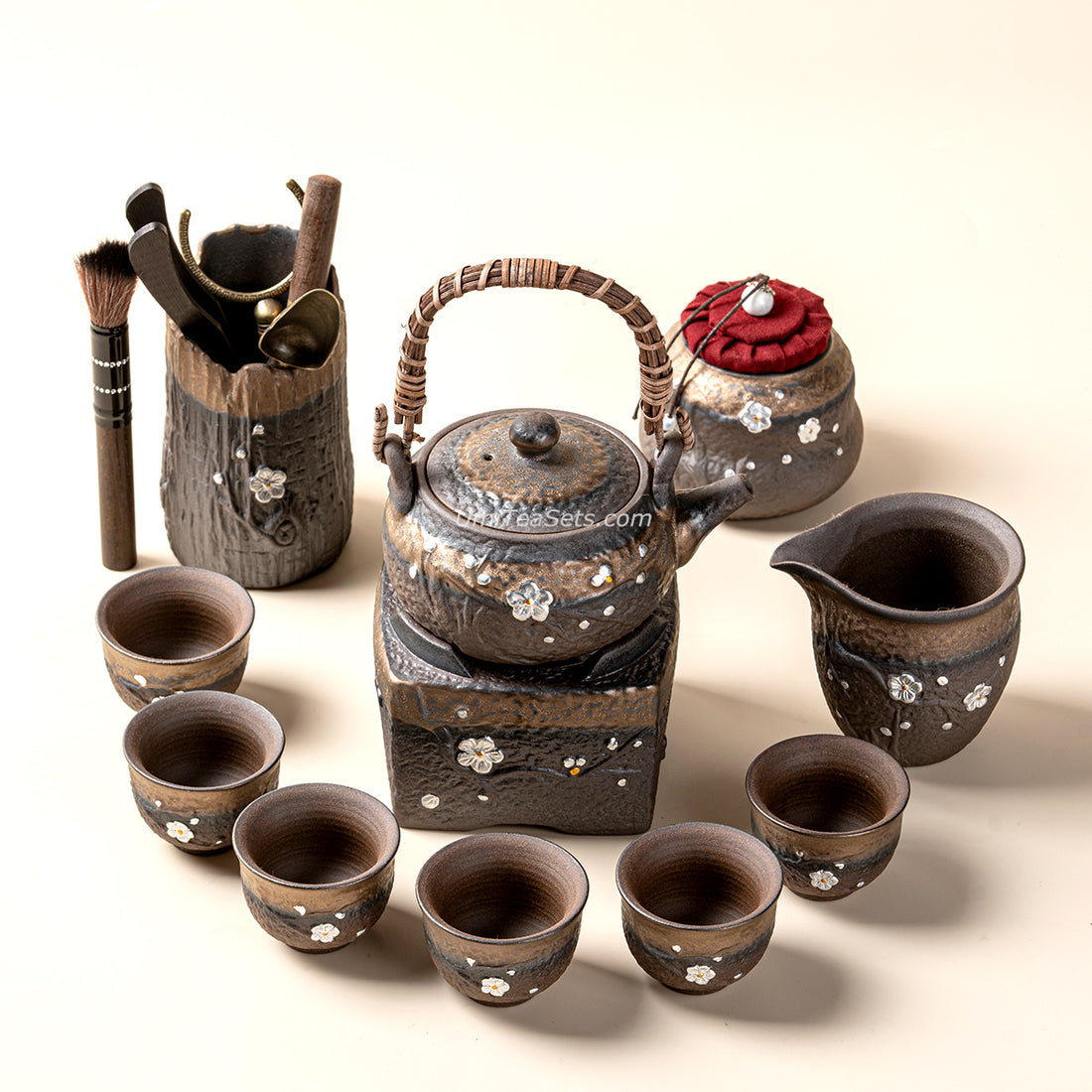 Vendor:Japanese Pottery Gilded Iron Glaze Plum Blossoms Tea SetUmi Tea Sets
Vendor:Japanese Pottery Gilded Iron Glaze Plum Blossoms Tea SetUmi Tea Sets- Regular price
-
$179.98 USD - Regular price
-
- Sale price
-
$179.98 USD
Quick view
-
Japanese Pottery Gilded Iron Glaze Bamboo Tea Set
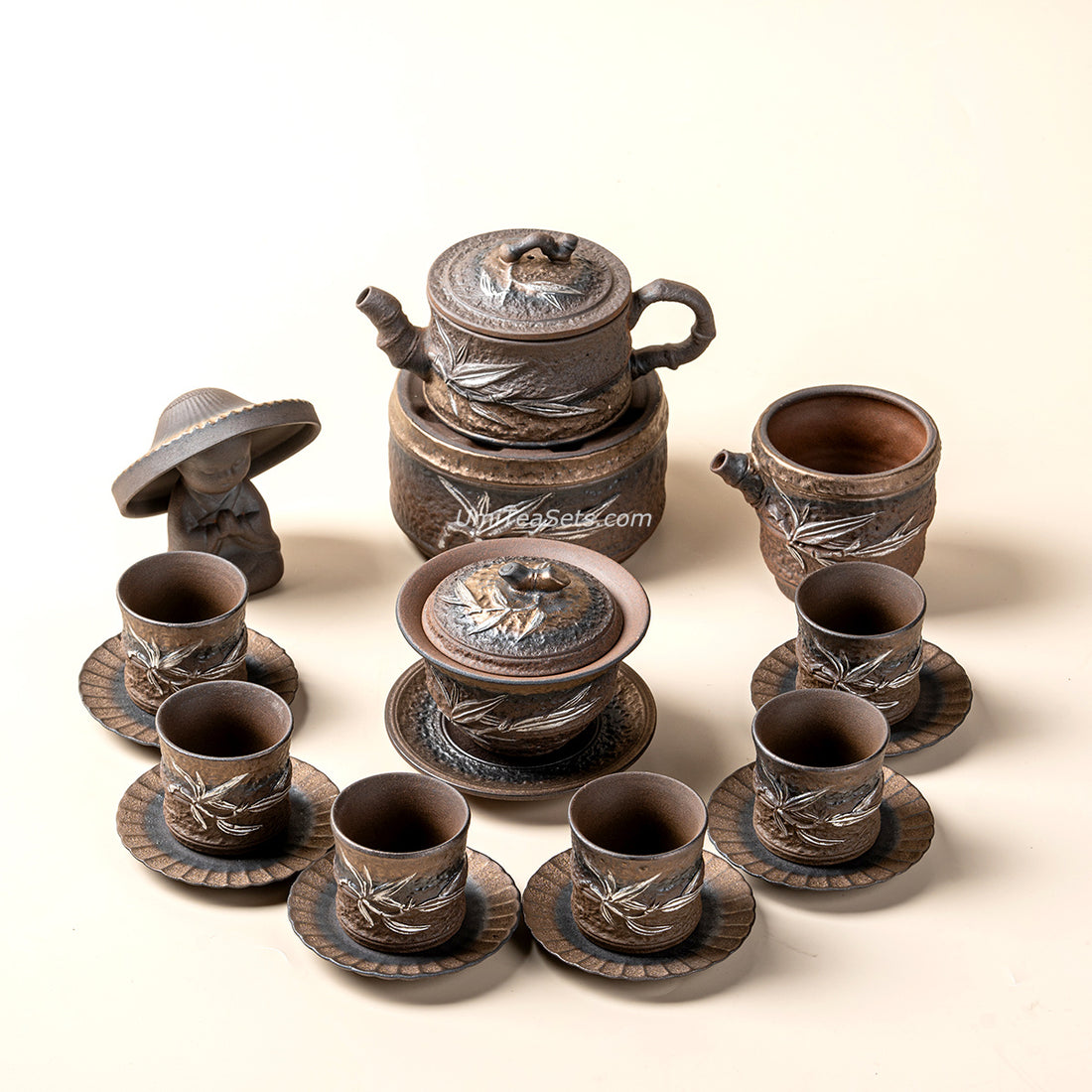 Vendor:Japanese Pottery Gilded Iron Glaze Bamboo Tea SetUmi Tea Sets
Vendor:Japanese Pottery Gilded Iron Glaze Bamboo Tea SetUmi Tea Sets- Regular price
-
$179.98 USD - Regular price
-
- Sale price
-
$179.98 USD
Quick view
-
Coarse Pottery Chai Kiln Green Glaze Tea Set
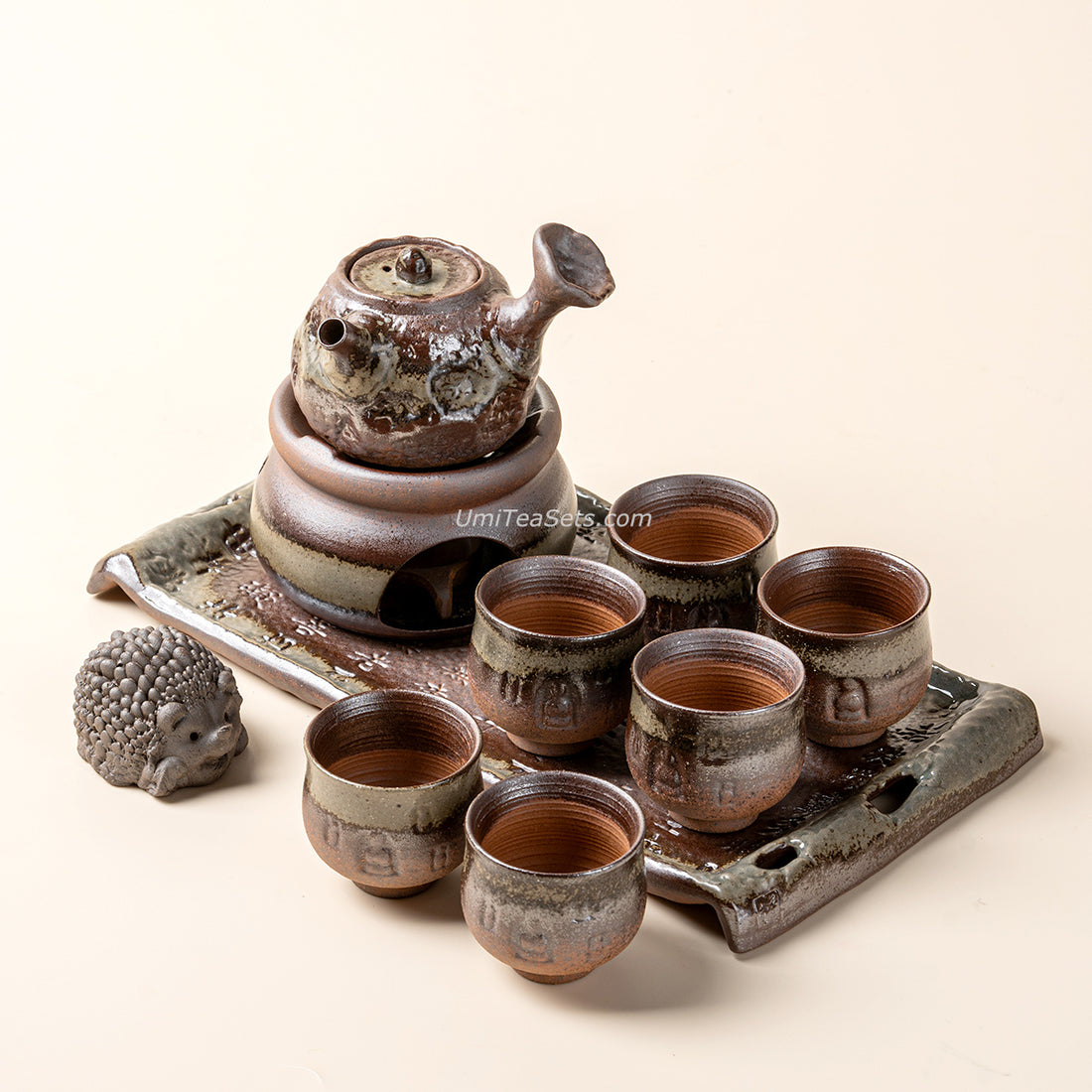 Vendor:Coarse Pottery Chai Kiln Green Glaze Tea SetUmi Tea Sets
Vendor:Coarse Pottery Chai Kiln Green Glaze Tea SetUmi Tea Sets- Regular price
-
$137.98 USD - Regular price
-
- Sale price
-
$137.98 USD
Quick view
-
Vintage Bronze Coarse Pottery Wormhole Tea Set
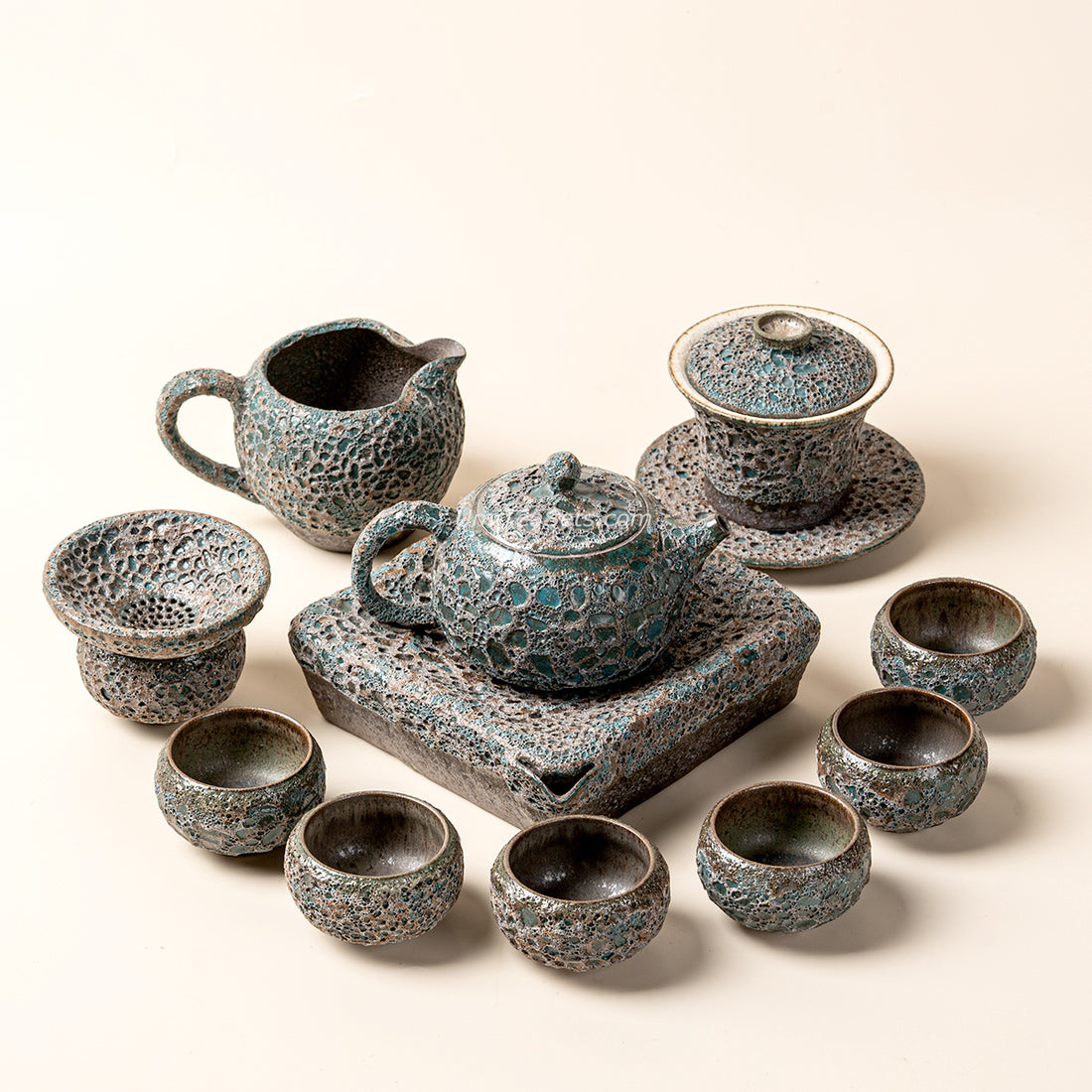 Vendor:Vintage Bronze Coarse Pottery Wormhole Tea SetUmi Tea Sets
Vendor:Vintage Bronze Coarse Pottery Wormhole Tea SetUmi Tea Sets- Regular price
-
$229.98 USD - Regular price
-
- Sale price
-
$229.98 USD
Quick view
-
Red Pottery Silver-Gilt Lotus Tea Set
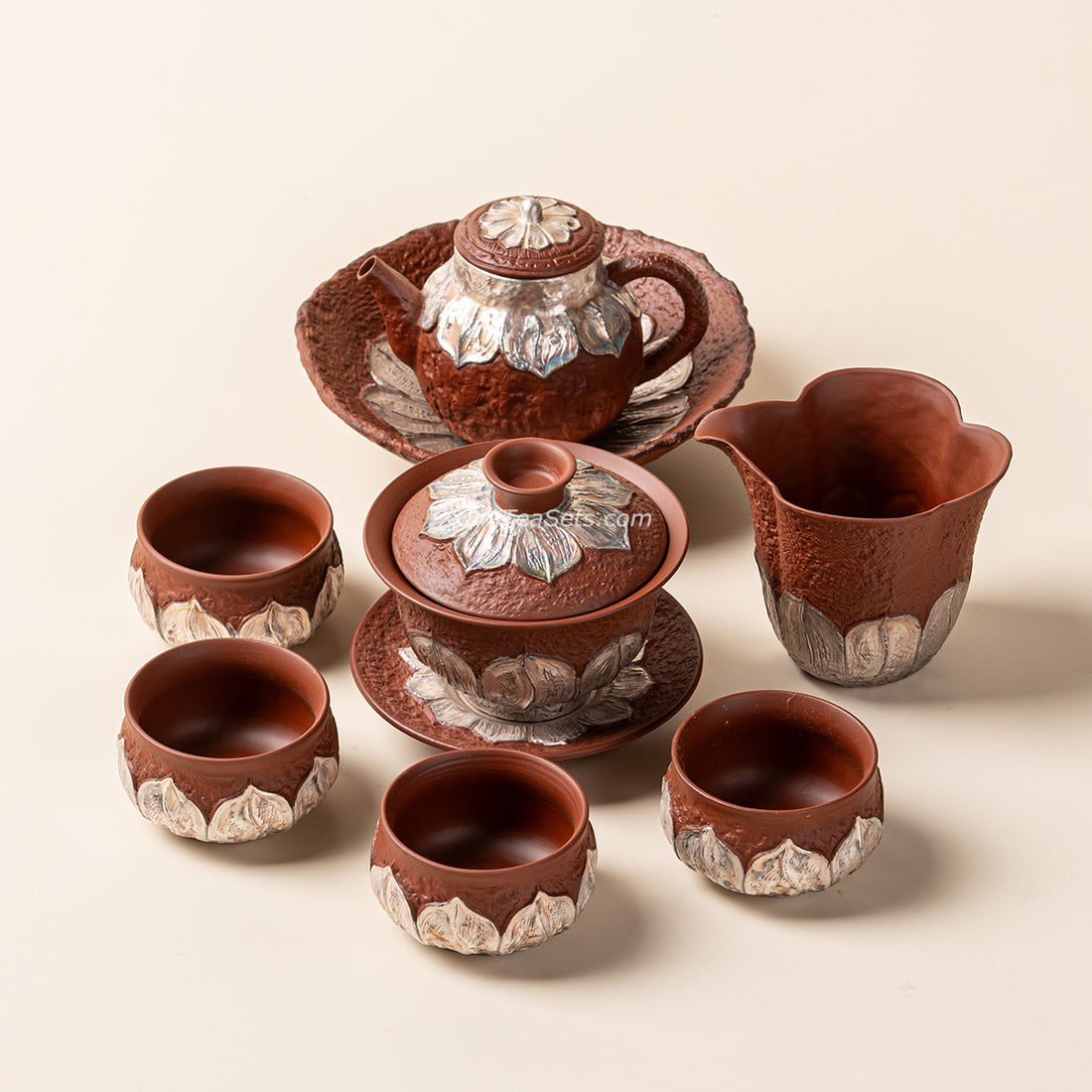 Vendor:Red Pottery Silver-Gilt Lotus Tea SetUmi Tea Sets
Vendor:Red Pottery Silver-Gilt Lotus Tea SetUmi Tea Sets- Regular price
-
$179.98 USD - Regular price
-
- Sale price
-
$179.98 USD
Quick view
-
Chinese Jun Kiln Lotus Porcelain Tea Set
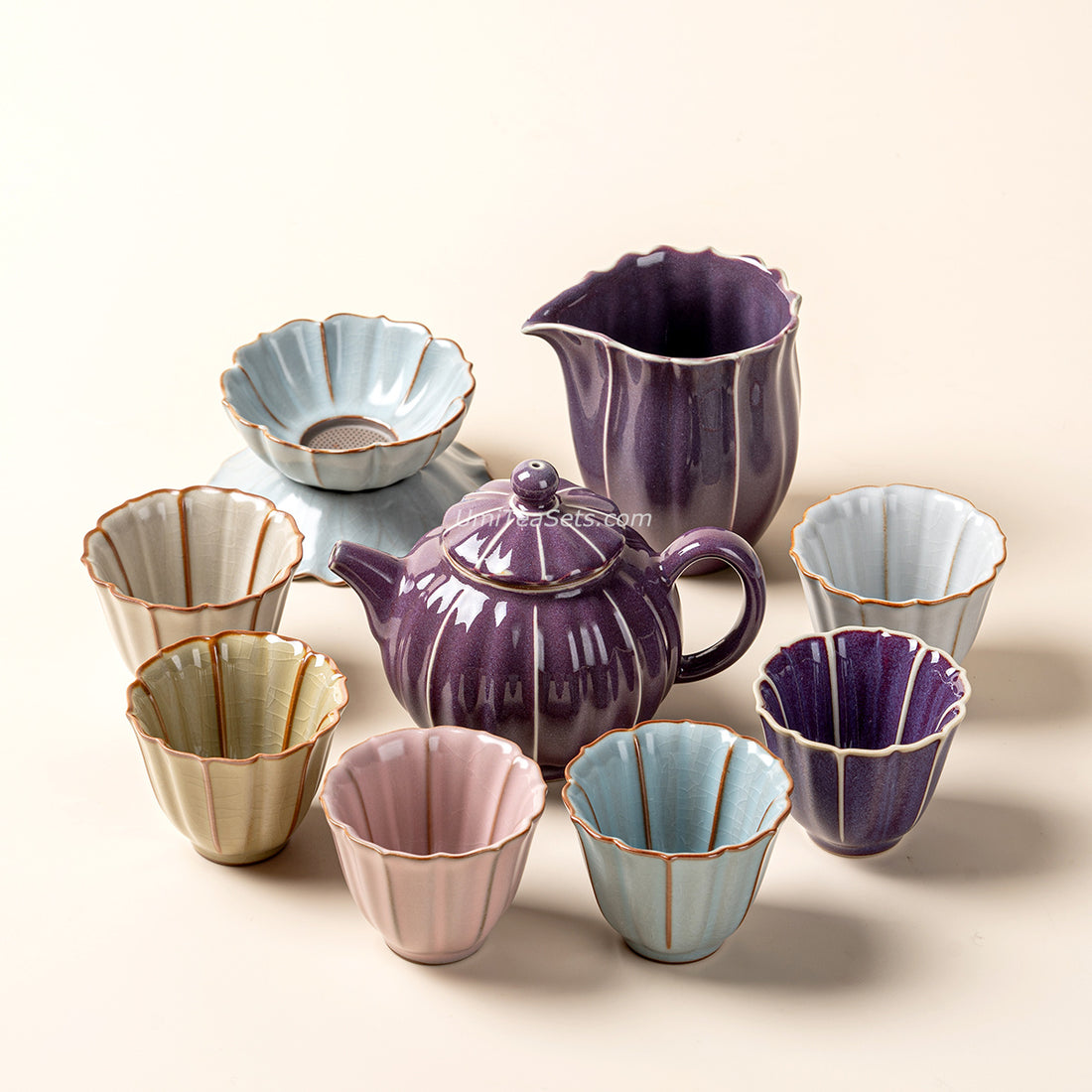 Vendor:Chinese Jun Kiln Lotus Porcelain Tea SetUmi Tea Sets
Vendor:Chinese Jun Kiln Lotus Porcelain Tea SetUmi Tea Sets- Regular price
-
$139.98 USD - Regular price
-
- Sale price
-
$139.98 USD
Quick view
-
Mountains And Birds Ceramic Tea Set
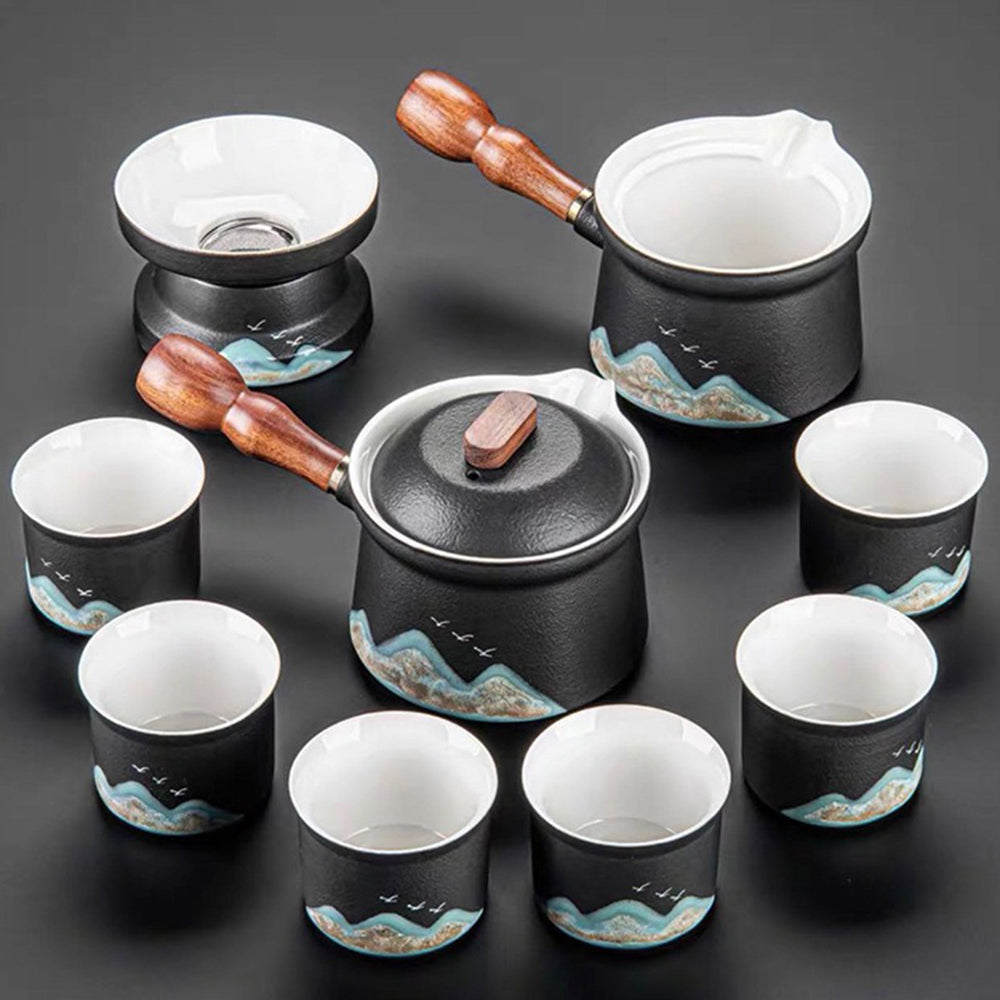 Vendor:Mountains And Birds Ceramic Tea SetUmi Tea Sets
Vendor:Mountains And Birds Ceramic Tea SetUmi Tea Sets- Regular price
-
$109.98 USD - Regular price
-
$159.80 USD - Sale price
-
$109.98 USD
Quick view
-
Japanese Black Pottery Mountains Tea Set
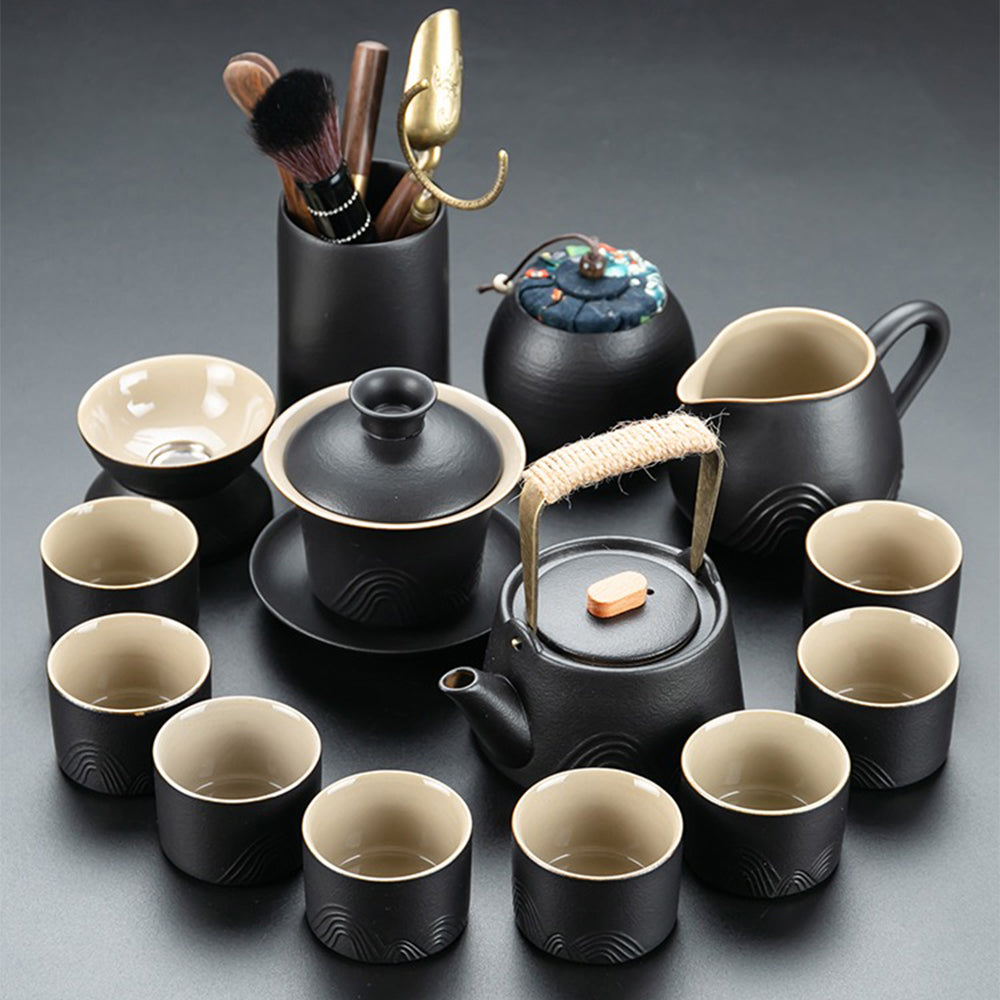 Vendor:Japanese Black Pottery Mountains Tea SetUmi Tea Sets
Vendor:Japanese Black Pottery Mountains Tea SetUmi Tea Sets- Regular price
-
$128.98 USD - Regular price
-
$158.60 USD - Sale price
-
$128.98 USD
Quick view
-
Japanese Black Pottery Kung Fu Tea Set
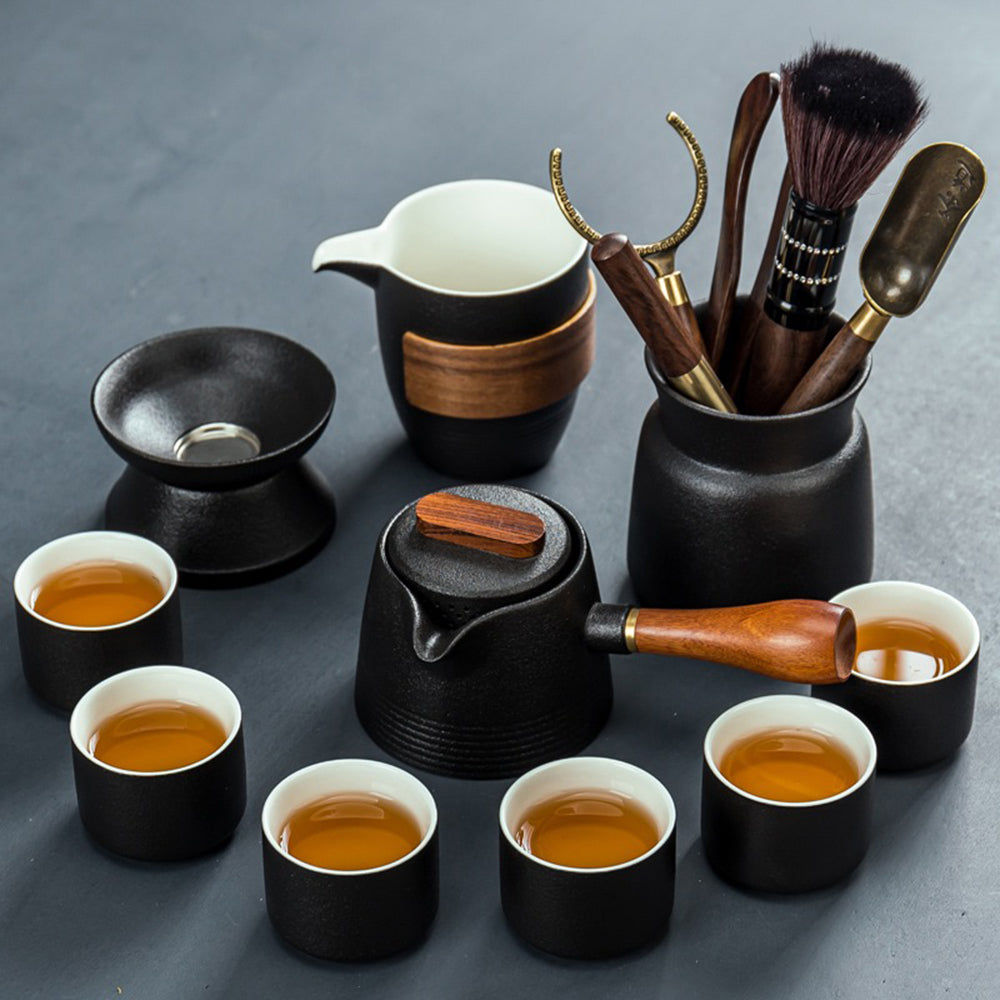 Vendor:Japanese Black Pottery Kung Fu Tea SetUmi Tea Sets
Vendor:Japanese Black Pottery Kung Fu Tea SetUmi Tea Sets- Regular price
-
$104.98 USD - Regular price
-
$128.90 USD - Sale price
-
$104.98 USD
Quick view
-
Japanese Vintage Coarse Pottery Tea Set
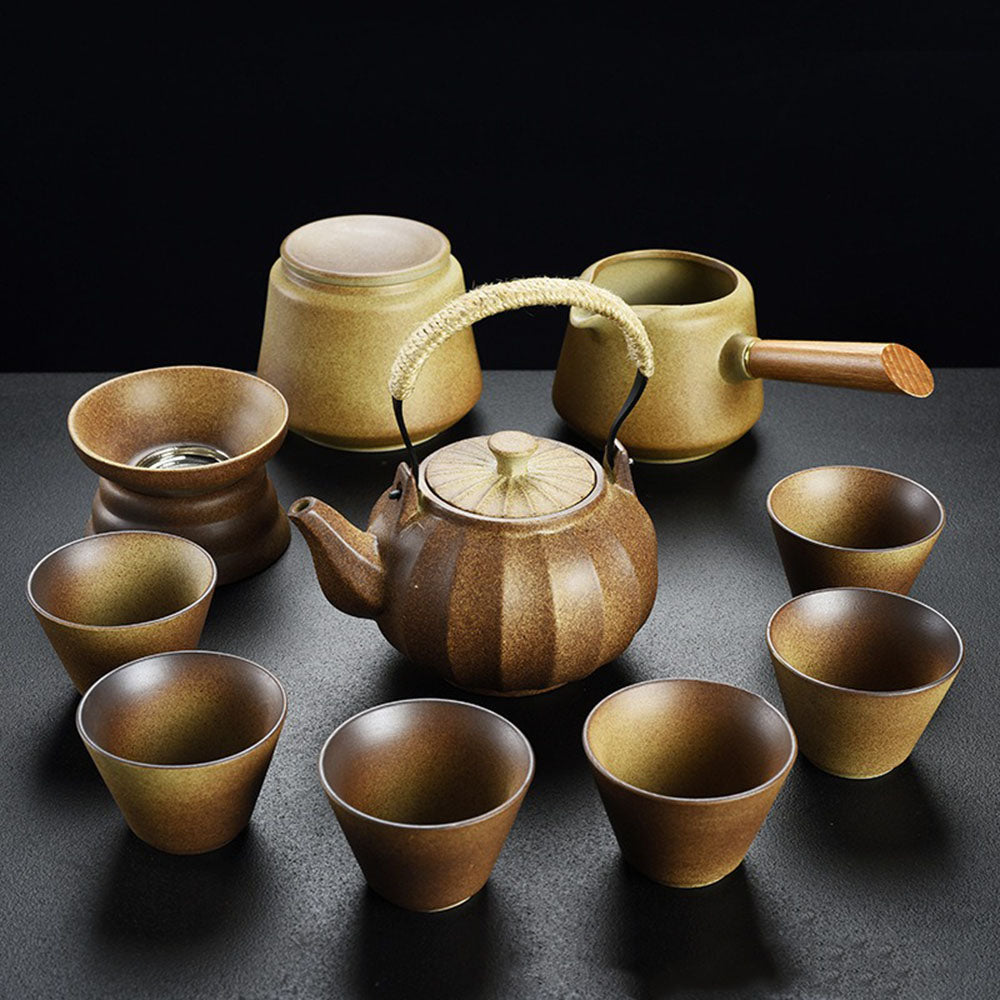 Vendor:Japanese Vintage Coarse Pottery Tea SetUmi Tea Sets
Vendor:Japanese Vintage Coarse Pottery Tea SetUmi Tea Sets- Regular price
-
$106.92 USD - Regular price
-
$135.60 USD - Sale price
-
$106.92 USD
Quick view
What Makes a Japanese Tea Set Special?
A Japanese tea set comprises more than just tools. It reflects years of tradition and craftsmanship. Each piece is carefully crafted using antiquated techniques. [Since clay or porcelain help improve the taste of tea, most common tea sets are made of these materials.] When you use one, you are connected to Japanese tea culture. Peace and thoughtfulness are the cultural currency. It disregards the usual minutiae of dining, making any old teatime feel special and significant.
What is Japanese Tea Set?

A Japanese tea set is more than a tea-making instrument. It is an amalgamation of art, culture, and tradition. These sets are designed to make and consume tea. They are used to make special tea rituals. Every item in the set has its function. They all contribute towards making tea and drinking it more delightful.
Components of a Japanese Tea Set
A Japanese tea set usually includes:
• Teapot (Kyusu): A diminutive teapot with a side handle. It assists in pouring tea smoothly and precisely.
• Tea Cups (Yunomi or Chawan): Tea cups are available in varied sizes and designs. Some are used for everyday purposes, whereas others are for the tea ceremony.
• Tea Caddy (Natsume): A storage vessel for matcha or loose tea. It preserves the tea.
• Tea Whisk (Chasen): Bamboo-made, it blends matcha into a creamy, foamy beverage.
• Tea Tray (Chapen): A platform you can brew tea on it, and the tea will not dip on the table.
Each one is well crafted, reflecting Japanese design concepts. Tea sets are usually made of clay or porcelain, which can improve the taste of tea. They have a nice feel and look beautiful.
Did you know? Japanese tea sets tend to reflect 'Wabi-Sabi.' This concept sees beauty in the simple and imperfect. It encourages you to see natural textures and little details in every piece.
Historical and Cultural Significance
Japanese tea sets are historically associated with tea ceremonies. These ceremonies began during the mid-Muromachi period. Tea houses, or Chashitsu, were significant for such events.
They reflected values such as serenity and equilibrium. Tea set designs evolved over time. They were influenced by tea house designs and the 'Wabi-Sabi' concept. The materials used in tea sets also carry cultural significance. For example, Raku ceramics are valued for their texture and the way they enhance the flavor of tea. Individuals collect these items for their history and beauty. Serving tea from a Japanese tea set brings you in touch with decades of tradition and craftsmanship.
Why Choose a Japanese Tea Set?

A Japanese tea set turns drinking tea into a reflective moment. Its aesthetics guide you to slow down and appreciate your tea. Whether you use it for everyday tea or for a formal ceremony, it imbues the experience with significance.
How to Pick a Traditional Japanese Tea Sets or Vintage Japanese Tea Sets?
Selecting a tea set can appear challenging initially. Having an idea about traditional and vintage sets is quite helpful. Both types have unique features for different tastes and purposes.Here's how to choose wisely.
Things to Think About When Picking a Tea Set
When selecting a Japanese tea set, remember the following:
Cultural Heritage: Traditional sets reflect Japan's rich cultural heritage. Their elegant and plain designs are ideal for tea ceremonies or serene tea moments. Old sets, however, possess historical appeal. They tend to reflect unusual patterns or materials of a particular era.
Aesthetics: Pick a design that matches your style. Traditional sets focus on clean looks and natural textures. Vintage sets may have detailed designs or unique finishes.
Sustainability: Vintage collections are environmentally friendly because they recycle old items. This minimizes waste and encourages green lifestyles. Classic collections created from natural resources such as clay or bamboo also align with eco-friendly principles.
Tip: If you're a beginner at tea-making, use a traditional set. It's simple and easy to use.
Traditional or Vintage: Which Should You Choose?
Think about how you'll use the tea set to decide.
|
Feature |
Traditional Tea Set |
Vintage Tea Set |
|
Purpose |
Great for daily tea or ceremonies. |
Perfect for collectors or special events. |
|
Design |
Simple and classic. |
Unique with historical charm. |
|
Durability |
Strong and made for regular use. |
Needs extra care because of age. |
|
Price |
Often affordable. |
Can cost more if rare. |
If you like simple and useful, go for a traditional set. If you love history and rare items, pick a vintage set.
What is Included in a Japanese Tea Ceremony Set?

A Japanese tea ceremony set has special tools for making tea. Each tool has a specific function in the tea-making process. Together, they show the balance and care in Japanese tea culture.
Here are the main parts of a Japanese tea ceremony set:
A Japanese tea ceremony set has special tools for making tea. Each tool has a specific function in the tea-making process. Together, they show the balance and care in Japanese tea culture.
Here are the main parts of a Japanese tea ceremony set:
• Teapot (茶壶): A diminutive teapot with a side handle. It assists in pouring tea smoothly and precisely.
• Tea Cups (茶杯): Tea cups are available in varied sizes and designs. Some are used for everyday purposes, whereas others are for the tea ceremony.
• Tea Caddy (茶叶罐): A storage vessel for matcha or loose tea. It preserves the tea.
• Chakin (茶巾): A small cloth to clean the tea bowl before and after use.
• Chasen (茶筅): A bamboo whisk that mixes powdered tea with hot water. It makes the tea smooth and foamy.
• Chashaku (茶杓): A bamboo or wooden scoop for measuring and adding tea powder.
• Chawan (茶碗): The tea bowl, which comes in different shapes and sizes. The type of bowl depends on the season or tea.
• Natsume/Chaire (棗・茶入): A container with a lid for storing powdered tea. These often have detailed designs.
• Tea Tray (茶盆): A platform you can brew tea on it, and the tea will not dip on the table.
Tip: Observe each detail when applying these items. This allows you to appreciate their beauty and function. The tea bowl, chawan, is of major significance. Its form is often in accord with the season or atmosphere of the ceremony. Larger bowls, for instance, retain tea heat in winter. Smaller bowls are more suitable for summer. The chasen and chashaku, which are fabricated from natural materials, indicate the worth of unassuming and expert work. With an entire Japanese tea ceremony set, you are linked to traditional times. Each gadget helps you concentrate and demonstrate respect. This makes brewing tea quiet and unique. Whether it's a formal ceremony or a quiet break, these tea sets turn tea brewing into an art.
What is the Difference Between a Japanese Ceramic Tea Set and a Japanese Porcelain Tea Set?
When selecting a Japanese tea set, you might wonder about ceramic and porcelain. They possess unique characteristics that alter the way they appear and function.
Material and Appearance
Ceramic tea sets utilize clay and are fired at a reduced temperature. This makes them thicker and they have a natural, rough appearance. They tend to have natural earth colors and textures that display the natural beauty of the clay. Porcelain tea sets are constructed from fine clay and fired at high temperatures. This makes them thin, smooth, and glossy. Their vivid colors usually feature intricate designs.
Durability and Heat Retention
Ceramic tea sets are durable and retain heat. They are ideal for teas that need to be kept warm continuously, such as green tea. Porcelain tea sets are fragile but do not retain odors or flavors. Their smooth surface is ideal for teas with delicate flavors.
Weight and Handling
Ceramic tea sets are heavier and easier to hold. They feel sturdy and traditional. Porcelain tea sets are lighter and feel more delicate. If you like an earthy feel, choose ceramic. If you want an elegant feel, choose porcelain.
Tip: Before you choose, consider your tea drinking habits. Ceramic tea sets are suitable for daily use, while porcelain tea sets are more suitable for special occasions. Knowing these differences will help you find the right tea set. Both ceramic and porcelain can make tea time beautiful and meaningful.
How to Know If It is an Authentic Japanese Tea Set?

When buying Japanese tea sets, it is important to know where they are made. Some tea sets claim to be Japanese, but not all tea sets are made in Japan. Here's how to verify their authenticity.
Check for Marks or Stamps
Authentic Japanese tea sets will usually have marks or stamps below. These could indicate the maker's name or the area it's from. Well-known areas are Kyoto, Arita, and Seto, which is famous for pottery. If you notice "Made in Japan" or Japanese characters, it is probably authentic.
Examine the Craftsmanship
Japanese tea sets are crafted with great care. Inspect the materials and how smooth it feels. Genuine sets utilize clay or porcelain and can even have minute details. Handmade ones could have minute imperfections, which make them distinct. Mass-produced sets would lack these details.
Learn About the Seller
Purchase from reputable vendors in order to get an authentic set. Seek retailers specializing in Japanese tea or pottery. Websites also usually post information about the place where they import their goods from. Check customer reviews in order to pick a great one.
Tip: When in doubt, ask the vendor about the provenance of the set. Ethical vendors normally provide certificates or provide explicit details.
Compare Prices
Real Japanese tea sets are more expensive due to their quality. If a price is too cheap, it may not be genuine. Vintage or handmade sets are higher in price. Following these tips, you can discover whether your tea set is authentic Japanese. In this way, you will be able to appreciate the beauty and culture of the original piece.
FAQ
1. How do you clean a Japanese tea set?
Gently rinse each piece with warm water. Do not use soap on unglazed ceramics, as soap can leave residue. Dry and avoid water spots with a soft cloth.
Tip: Never place it in a dishwasher or rough scrubbers. These will damage the delicate surfaces.
2. Can a Japanese tea set be used for all teas?
Yes, but it can be used on most teas. However, it's optimum for green teas such as matcha or sencha. The materials enhance the flavor and aroma of the teas.
Note: Avoid strong-flavored teas that could leave lasting scents.
3. Are Japanese tea sets microwave-safe?
Most conventional Japanese tea sets are not microwave-safe. Substances such as clay or porcelain can crack with high heat.
Reminder: Always follow the manufacturer's instructions prior to microwaving.
4. Why are some Japanese tea sets expensive?
The cost reflects the skill, materials, and cultural significance. Handmade sets or those from well-known destinations such as Arita or Kyoto are more expensive due to their quality and workmanship.
Did you know? Antique or old sets can carry history and be more expensive.
5. How do you store a Japanese tea set?
Store the tea set in a dry, cool place. Stack the tea set with a soft cloth or pad to prevent scratches. Avoid direct sunlight to maintain its finish and color.
Tip: Ensure all pieces are thoroughly dried before storage to avoid mold.
Where to Buy Real Tea Sets?
To acquire a genuine tea set, buy from reputable sources. Find stores or websites specializing in Japanese tea culture. Inspect the materials and the manner in which the set is constructed. Genuine sets usually have hand-painted designs or stamps indicating where they come from.
Note: Always inspect for good quality, such as smooth surfaces and tight lids. These details enhance tea time. Considering these tips, you can get a tea set that suits your style and makes tea time special.
Looking for the best Japanese tea set to spruce up your tea time? At Umi Tea Sets, you can find a diverse range of authentic Japanese tea sets from Japan.
Whether you're looking for Japanese porcelain tea sets, or the perfect Japanese ceremonial tea set to honor the art of Japanese tea, Umi Tea Sets brings you the best of the best. Straight from Japan.
Check out our collection of traditional Japanese tea sets here!












